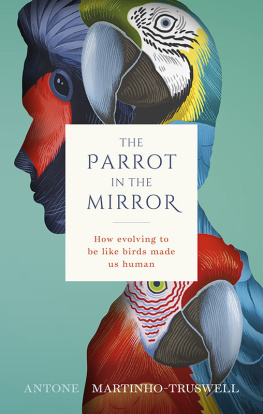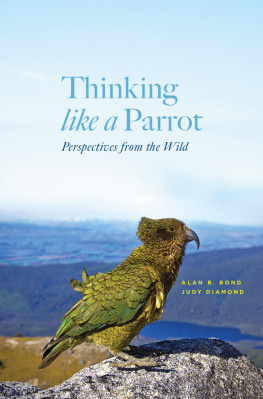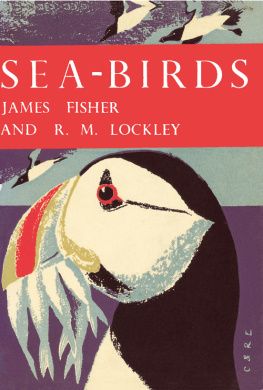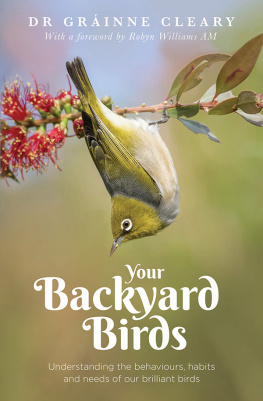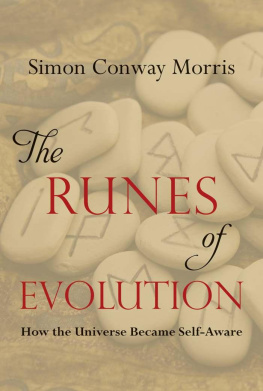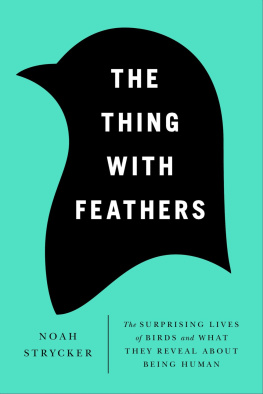

Great Clarendon Street, Oxford, OX2 6DP,
United Kingdom
Oxford University Press is a department of the University of Oxford. It furthers the Universitys objective of excellence in research, scholarship, and education by publishing worldwide. Oxford is a registered trade mark of Oxford University Press in the UK and in certain other countries
Antone Martinho-Truswell 2022
The moral rights of the author have been asserted
All rights reserved. No part of this publication may be reproduced, stored in a retrieval system, or transmitted, in any form or by any means, without the prior permission in writing of Oxford University Press, or as expressly permitted by law, by licence or under terms agreed with the appropriate reprographics rights organization. Enquiries concerning reproduction outside the scope of the above should be sent to the Rights Department, Oxford University Press, at the address above
You must not circulate this work in any other form
and you must impose this same condition on any acquirer
Published in the United States of America by Oxford University Press
198 Madison Avenue, New York, NY 10016, United States of America
British Library Cataloguing in Publication Data
Data available
Library of Congress Control Number: 2021942678
ISBN 9780198846109
DOI: 10.1093/oso/9780198846109.001.0001
Printed and bound by
CPI Group (UK) Ltd, Croydon, CR0 4YY
Links to third party websites are provided by Oxford in good faith and for information only. Oxford disclaims any responsibility for the materials contained in any third party website referenced in this work.
+AMDG+
To Emma, Flora, and Clara,
For whom I do all things
And
To my parents, and to Alex K:
It is as much their work as mine.
CONTENTS
INTRODUCTION
S ixty-six million years ago, an asteroid crashed to Earth in what is now Mexico, and brought the age of reptiles to an end. Massive reptiles, including the dinosaurs on land, as well as similar flying and swimming species, had dominated the Earth for a long timeabout 150 million years. At a stroke, the dinosaurs were doomed to oblivion. Worse than that! It is now thought that every tetrapodthat is, four-limbed animalweighing over 25 kilogrammes died in the years following the impact, with a few rare exceptions like the leatherback turtle.
In the ashes of a world undone, a new set of animals came to the fore. Previously an undignified group, a sideshow to the reptiles dominance, the newly scoured Earth gave them the opportunity to explode in diversity and capability, evolving new forms and developing new capabilities. They were carnivores and herbivores, hunters and hunted. Some swam, some grew larger, some became ferocious.
On one continent, where conditions were just right, they became very smart. Their lives grew longer, and their social interactions more complex. They stood upright, and talked a great deal more than their close relatives. Their numbers were small as yet, but over time, equipped with big, creative brains and seeking out resources, they began to roam. Eventually, they found the bridge off their continent and spilled out into the rest of the world. They spread quickly, over all the continents. Soon, the smartest animals anywhere on Earth had populated most of the planet.
And fifty million years after the parrots had accomplished all this, humans arrived, and did it again.
* * *
Parrots are probably humans favourite birds, and it is easy to see why. They are colorful and playful, fascinating to watch, have vaguely human facial expressions and body language, and, of course, they talk. That would be enough for us to be fascinated by them. But I think there is something more. Parrots are our evolutionary mirror image. We are only very distantly related, in the sense that all vertebrates are, but share many similaritiesmore so, in some cases, than with our closer animal relatives. Their evolutionary history follows similar patterns, and they are natures other attempt at extraordinary intelligence, in a distant branch of the tree of life. These similarities can be surprising, given how fundamentally different we seem to be from birds. I would argue, though, that even beyond the parrots, we humans can find great similarities with many birds that we do not share with other mammals. Indeed, we are positively bird-like.
Humans are animals, more specifically, mammals, and, more specifically, primates. Primates are a group of highly intelligent, versatile mammals that originated in Africa and include the great apesourselves, chimpanzees, bonobos, gorillas, and orang-utansas well as all the other monkeys, baboons, and similar animals. The primates all have thumbs, and our hair and internal organs are more or less like those of other mammals. We are not closely related to birds, and we do not look anything like them. Our bodies, our eyes, our skin and hair, our blood, our brain structure, and our ancestry, diverge radically from the birds.
Yet, in another way, we humans also have many things in common with birds. The ways of living first invented by birds are very different from typical mammal strategies, but very similar to those that later made primates unique among mammals, and humans unique among primates.
I suspect this is part of why we find birds so captivating. One might think that when an animal has become intelligent enough to start studying itself and other animals, its focus would be on its nearest relatives. To some extent, that is true. Most of the animals that we live closely with are mammals that we have domesticated, like dogs, cats, and livestock (other than poultry). A great deal of scientific research is focused on rats and other rodents (to better understand the mammal body, in a cheap and expendable form), or our close relatives, the chimpanzees and other primates (to better understand the mammal brain, in an expensive and precious form).
Yet there is an enormous interest in birds, especially among animal lovers and amateurs. Aviaries, birdwatching, nest-boxes, birdfeeders, pets, clubswe love birds. Birdsong in the morning is such a peaceful and satisfying background that we have devised alarm clocks that can wake us with a simulated dawn chorus. Birds are our symbols: we have doves for peace and eagles for patriotism. People describe themselves as bird lovers, and birdwatchers keep life-listswith each new bird species sighted becoming a lifelong accomplishment to be cherished and compared with other enthusiasts. Grandparents take children to feed ducks in the park, fanciers keep pigeons for racing and homing. And I suspect every human, alive or dead, has had that dreamyou know, the one where you can fly, like a bird.
Biologists also love birds. Our modern understanding of animal behaviour was established partly thanks to Konrad Lorenzs work on geese and ducks. Lorenz arranged for groups of baby ducks and geese to see him as the first moving object in their lives instead of their and he did a number of now-famous experiments like quacking to them to encourage them to follow him. His discovery of imprintingthe process by which a newborn chick or duckling learns to recognize its motherwould win him a Nobel Prize for Physiology or Medicine in 1973. Nowadays, newly hatched chickens are a standard model organism for studying all kinds of behaviour and physiology in the lab, as well as in the biology classroom. Pigeons have a long history in experiments on the process of learning, and in the study of animal navigation. B. F. Skinner used pigeons in his famous Skinner box experiments, where he showed that you could train an animal through precise rewards to carry out almost any action. He even managed to teach two pigeons to play a sort of ping-pong/air hockey hybrid game by rewarding the scores with birdseed. Studies on great tits and other small songbirds helped to establish the field of ecology and now underpin much of what we know about behavioural economics and how animals optimize their behaviour. Add to this a variety of famous work on intelligence in parrots and crows, and huge amounts of conservation-focused study, and it is clear that the biological profession has a healthy interest in birds.
Next page
